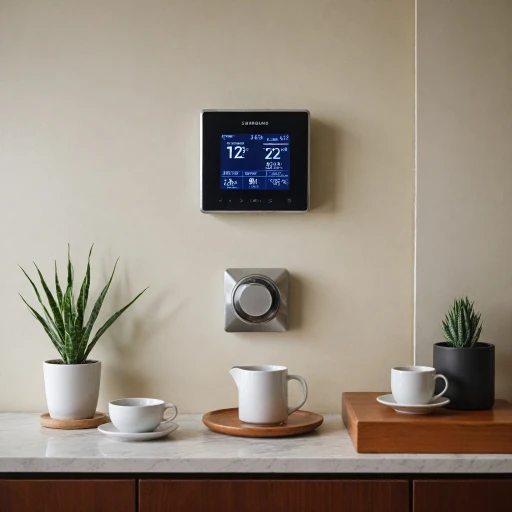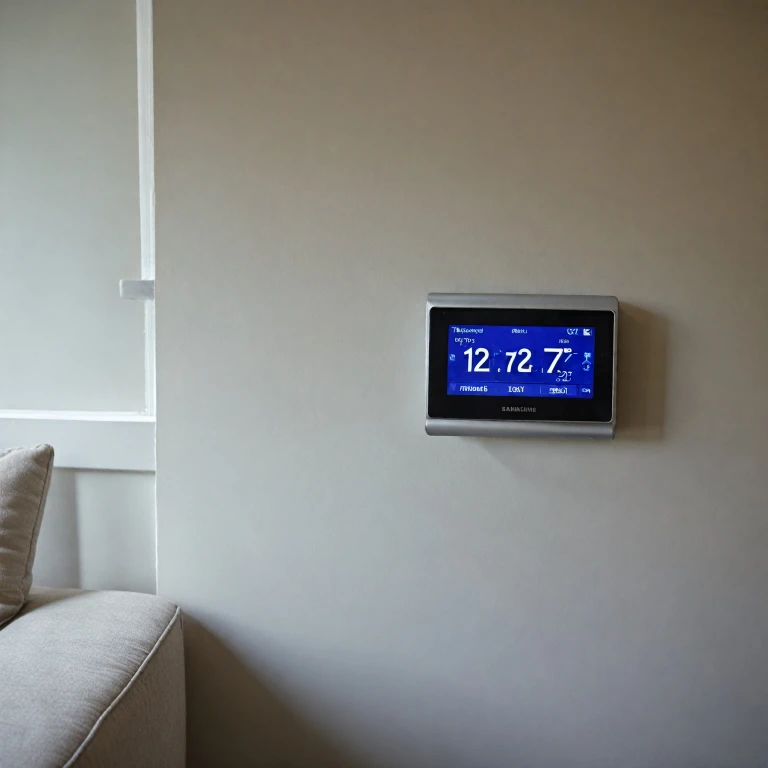What is a Common Wire?
Understanding the Essential Role of the Common Wire
In modern HVAC systems, the common wire plays a crucial role in ensuring the efficient operation of smart thermostats. Often referred to as the 'C-wire' or a neutral wire, this conductor serves as a critical component in the electrical configuration of these systems. It provides a continuous flow of power to the thermostat, which is particularly important for smart thermostats due to their advanced functionalities.
The common wire doesn't carry voltage in the conventional sense but acts as the neutral point that completes the electrical circuit. This wire connects the low-voltage heating or cooling system to a stable power source, usually stemming from the main electrical panel. It's essential for maintaining a constant power supply to the thermostat, which is otherwise not possible solely through batteries or intermittent power sources.
Smart thermostats, like the Nest or other comparable systems, need a reliable power feed to maintain connectivity, process data, and run interface displays. Without a common wire, the thermostat may try to draw power from other sources, which can lead to unreliable performance or a complete lack of functionality.
In some older HVAC systems, the common wire might not be present, necessitating investigations into possible solutions. Homeowners might consider a wire adapter or consult an electrician to integrate a common wire into their system's wiring. Alternatively, upgrading the entire system might be a choice for those looking to adopt the latest technology.
For more detailed and practical guidance on installing a smart thermostat, such as the Honeywell 5000, which may not require a common wire, do check the
comprehensive guide to installing the Honeywell 5000 thermostat. This resource offers valuable insights into addressing common installation considerations, leveraging different wiring setups effectively.
Why Smart Thermostats Need a Common Wire
Why is the Common Wire Essential for Smart Thermostats?
In the realm of smart thermostats, the common wire, often dubbed the "C-wire," plays a pivotal role. It acts as a neutral conductor, providing a continuous flow of electrical power from the HVAC system to the thermostat. Traditional thermostats function efficiently on a limited power supply derived from other wires, but smart thermostats demand a more constant supply due to their advanced features.
The advent of features such as Wi-Fi connectivity, digital displays, and even voice control necessitates a more robust power source than batteries alone can provide. The common wire fulfills this need, ensuring reliable performance of smart functionalities. Nest and other leading smart thermostat brands have recognized the importance of maintaining consistent power, making the common wire a vital component in their wiring systems.
Moreover, the common wire accommodates the electrical current that powers the thermostat's features, without interruptions. This is particularly crucial in systems where the thermostat 'clicks' or switches frequently between heating and cooling modes. HVAC systems rely on precision and efficiency, and as such, the common wire acts to enhance these aspects by stabilizing the power supply.
For those considering an upgrade to a smart thermostat, understanding the need for a common wire can be critical. Homes with older electrical systems might not have a pre-installed common wire, presenting potential challenges which can be addressed through various solutions. Nevertheless, for systems already incorporating a common wire, or those able to install a wire adapter to create one, the transition to a smart, efficient home is significantly simplified.
Considering expanding your knowledge further on installation and specific models, you might find it helpful to explore
A Comprehensive Guide to Installing the Honeywell 5000 Thermostat. This resource can provide additional insights on integrating smart technology with your existing heating system.
Identifying if Your System Has a Common Wire
Determining the Presence of a Common Wire
To feed the rising demand for smart thermostats, understanding your current system's wiring is essential; notably, whether it includes a common wire. Here's a straightforward way to identify if your system has this critical component.
Before diving in, ensure that your furnace and all related power systems are entirely shut off. This prevents electrical current from posing a risk while you're examining the wiring.
- Locate Your Thermostat: Gently remove the thermostat faceplate to access the wiring behind it. You will usually see several wires connected to different terminals. A common wire is typically labeled 'C' for 'common.'
- Inspect the Terminal: The common wire is most often a blue wire, but color isn't consistent across all systems. Check for a wire connected to the 'C' terminal. If it has one, you've got a common wire installed.
- Verify at the Furnace or HVAC System: If you are unsure from the thermostat location, head to the heating cooling system or the main panel where all wires terminate. This step might require slightly more technical inspection, so ensure caution.
- Professional Consultation: When in doubt, an electrician can provide clarity. They have the expertise to confirm the presence of a common wire and help you successfully upgrade to a smart thermostat.
For a comprehensive understanding of thermostat wiring, including how the common wire plays a part in your HVAC system setup, consider checking this
guide to using your Daikin thermostat.
Solutions for Homes Without a Common Wire
Strategies for Homes Lacking a Common Wire
Finding a smart thermostat incompatible with your existing wiring setup can be frustrating, especially when you've just invested in the latest technology. If your home lacks a common wire, there are several solutions to explore, ensuring your smart thermostat operates smoothly.
- Wire Adapter: One of the most straightforward solutions is using a wire adapter, a device designed to add a common neutral conductor to the existing system. This accessory integrates with your HVAC system, offering the necessary power for smart thermostats without a direct common wire.
- Using a G-Wire as a C-Wire: In some setups, you can repurpose an existing wire, such as the G wire, commonly used for the fan. By reconfiguring this wire to act as a common wire, you provide the power smart thermostats need. This method often requires switching which wires are active at the thermostat and furnace levels. However, this may affect fan-only operations if not properly managed, so proceed with caution.
- External Transformer: Another option is the installation of an external transformer. This small electrical device provides a separate power source, delivering the required voltage and connecting directly to the thermostat. While reliable, it may demand more complex wiring and space consideration.
- Professional Electrician Consultation: Enlisting the expertise of an electrician can be invaluable. They can analyze your current system and suggest the best solution tailored to your home's specific needs. A professional can ensure a safely configured setup, balancing power requirements and maintaining the smooth operation of both heating and cooling systems.
- Upgrading to a C-Wire: Lastly, for those looking for a permanent fix, upgrading your existing wiring to include a dedicated common wire might be the way to go. While it might demand more upfront effort and expense, this upgrade future-proofs your system for other potential smart home enhancements, expanding options for additional devices that may also rely on the electrical current from a common wire.
Choosing the right solution will largely depend on your home's wiring layout and personal preference. Ensuring your smart thermostat is correctly set up will help optimize energy efficiency and maintain comfort in your living environment.
Potential Challenges and Considerations
Challenges and Factors to Consider with Common Wires
When integrating smart thermostats into your existing HVAC system, one of the key challenges is adequately managing the common wire requirements. This component is crucial in maintaining a stable electrical current flow, thus preventing intermittent power losses that could lead to malfunctioning or damage of the smart thermostat.
Installing and connecting a common wire might seem straightforward, but several aspects can complicate the process:
- Variable System Designs: Different HVAC systems come with distinct wiring setups. This includes differences in wire color codes and the location of the neutral point, which can lead to confusion during installation. Being familiar with thermostat wire colors and setups can greatly aid in minimizing mistakes.
- Absence of Common Wire: Homes often lack a dedicated common wire when older thermostats are replaced with smart models. Without a common line, provisions such as wire adapters may be needed to establish a neutral conductor, which supplies continuous power to the smart thermostat. This interface often requires assistance from a professional electrician to ensure safe and effective installation.
- Compatibility Issues: Not all devices are compatible with each other. An existing furnace might not support the wiring needs of a modern smart thermostat. Utilizing resources like your system's wiring diagram can help confirm compatibility and prevent issues that necessitate costly adjustments.
- Location Constraints: Wiring logistics can be challenging, particularly when the main panel's and thermostat's elements are distanced apart. This spatial discrepancy may require additional extension wiring or innovative solutions to bridge the gap while maintaining safety standards.
- Expansion or Upgrades: When planning an upgrade or expansion of your HVAC system, consider how changes might affect common wire connectivity and the subsequent power requirements of new smart thermostats.
Future Trends in Smart Thermostat Technology
Emerging Innovations in Smart Thermostat Technology
The landscape of smart thermostat technology is continually evolving, driven by advancements in electrical systems and consumer demand for energy efficiency. As we look to the future, several trends are set to reshape how these devices integrate with our homes and HVAC systems.
- Enhanced Connectivity: The integration of smart thermostats with other smart home devices is becoming more seamless. This connectivity allows for better automation and control, utilizing systems like Google Nest to create a more cohesive home environment.
- AI and Machine Learning: Future smart thermostats will likely incorporate advanced AI to learn user habits more accurately, optimizing heating and cooling schedules to save energy and reduce costs.
- Improved Energy Efficiency: With a focus on sustainability, smart thermostats are expected to offer more precise control over energy consumption. This includes better management of electrical current and power through the use of more efficient common wires and wire adapters.
- Integration with Renewable Energy Sources: As renewable energy becomes more prevalent, smart thermostats will need to adapt. This could involve integrating with solar panels or other renewable sources to manage energy usage more effectively.
- Advanced User Interfaces: User interfaces are becoming more intuitive, allowing users to easily manage their thermostat settings. This includes the ability to remotely control the system from any location, providing convenience and flexibility.
These trends indicate a shift towards smarter, more integrated, and efficient systems that not only enhance comfort but also contribute to a sustainable future. As the technology evolves, it will be crucial to consider the role of common wires and other electrical components in supporting these advancements.

